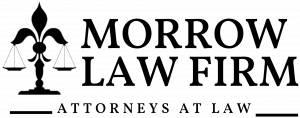
Dashcams and Personal Injury Litigation: Legal Insights from Morrow Law Firm on the Role of Video Evidence
As dashboard cameras become increasingly common in vehicles across Louisiana, the legal implications of dashcam footage in personal injury cases are receiving growing attention. Attorneys at Morrow Law Firm in Opelousas, which focuses on cases involving workplace and vehicular injury, are seeing a notable shift in how these compact recording devices influence legal outcomes.
Dashcams, or dashboard cameras, are mounted to a vehicle's windshield or dashboard and continuously record the road while the vehicle is in operation. Many models offer features such as high-definition recording, wide-angle lenses, loop recording, night vision, audio capture, and even cloud-based storage. Some devices record rear-facing views and interior footage as well.
William P. Morrow, one of the leading attorneys at Morrow Law Firm, notes that the introduction of dashcam evidence into personal injury litigation has added a layer of factual clarity to cases that might otherwise rely solely on verbal accounts or limited physical evidence. “Video footage changes the nature of certain cases by removing uncertainty and subjectivity. A properly functioning dashcam provides an objective perspective that can validate or disprove claims made by either party involved in an accident.”
In collisions where fault is contested—such as rear-end incidents, alleged failure to yield, or disputes over traffic signals—dashcam footage may capture decisive moments: a vehicle swerving unexpectedly, a light turning red, or a driver using a mobile phone moments before impact. These moments, when recorded, often become key elements in case resolution.
For plaintiffs pursuing personal injury claims, dashcam footage may reinforce the claim’s legitimacy. High-impact collisions captured on video can support claims of forceful trauma, making it more difficult for insurers or defense teams to argue for reduced compensation based on lack of severity. In other scenarios, such footage may provide a defense against unfounded counterclaims, protecting drivers from allegations of negligence.
However, Morrow emphasizes that video evidence is not infallible nor universally beneficial. “Dashcams serve as neutral observers,” he said. “They do not interpret events. If a client’s own footage shows unsafe driving, distracted behavior, or partial fault, that information must be addressed honestly and strategically.”
Attorneys at Morrow Law Firm often review dashcam recordings privately prior to submission. This approach allows legal teams to evaluate potential risks, confirm consistency with other evidence, and determine how footage should be introduced or withheld during negotiations or trial. Louisiana’s comparative fault law allows for liability to be divided, meaning that partial responsibility captured on camera can still impact settlement amounts or verdicts.
Dashcams also have limits. They typically do not capture medical evidence of injury, emotional trauma, or the full context of behavior prior to the moment of recording. A video may show an impact but cannot establish internal injuries, pre-existing conditions, or medical consequences—areas that require documentation from healthcare providers, radiology reports, and expert evaluations.
In side-impact collisions, for instance, forward-facing cameras may not show who had the green light unless additional cameras are used. Likewise, a motion-activated dashcam may fail to capture an incident occurring while the vehicle is parked or turned off unless the device has standby power features or multi-directional coverage.
Despite these limitations, dashcam use continues to rise in both personal and commercial vehicles. Increasing public awareness, social media influence, and affordable pricing contribute to adoption. For under $200, many drivers equip vehicles with devices capable of storing and uploading critical footage.
Legal professionals now routinely ask clients if footage was captured during an incident. Footage that confirms liability can be used in demand letters, pre-trial negotiations, and courtroom proceedings. In some instances, video evidence prompts early settlements or modifies how claims are defended by insurance providers.
At Morrow Law Firm, personal injury cases involving workplace accidents, vehicular crashes, and commercial transportation events frequently involve video analysis. In commercial fleets, multiple dashcams may be installed to protect against liability claims or confirm adherence to company policy and traffic law.
The firm is led by William P. Morrow, John Michael Morrow, Jr., and Stephen M. Morrow, who collectively manage a wide range of injury cases throughout Louisiana. While the team represents individuals in workplace and vehicular injury matters, dashcam usage is increasing across all sectors of litigation, including pedestrian accidents, rideshare incidents, and disputed traffic stops.
In rural areas like Opelousas and surrounding parishes, access to immediate witness testimony may be limited, making dashcam footage even more significant. The ability to supplement police reports with visual evidence can streamline legal proceedings and reduce reliance on inconsistent recollections.
Those who operate vehicles for work-related purposes—such as delivery drivers, construction supervisors, or municipal employees—may find dashcams serve as both a safeguard and a source of documentation when on-the-job injuries occur in transit. Employers, insurance adjusters, and legal teams often use the footage to determine protocol compliance and injury timelines.
The broader message remains consistent: video evidence is becoming a standard part of modern personal injury law. Whether protecting the interests of injured workers, defending drivers from false allegations, or expediting resolution timelines, dashcams are contributing to a more transparent legal process.
Morgan Thomas
Rhino Digital, LLC
+1 504-875-5036
email us here
Visit us on social media:
Facebook
Distribution channels: Automotive Industry, Insurance Industry, Law
Legal Disclaimer:
EIN Presswire provides this news content "as is" without warranty of any kind. We do not accept any responsibility or liability for the accuracy, content, images, videos, licenses, completeness, legality, or reliability of the information contained in this article. If you have any complaints or copyright issues related to this article, kindly contact the author above.
Submit your press release

